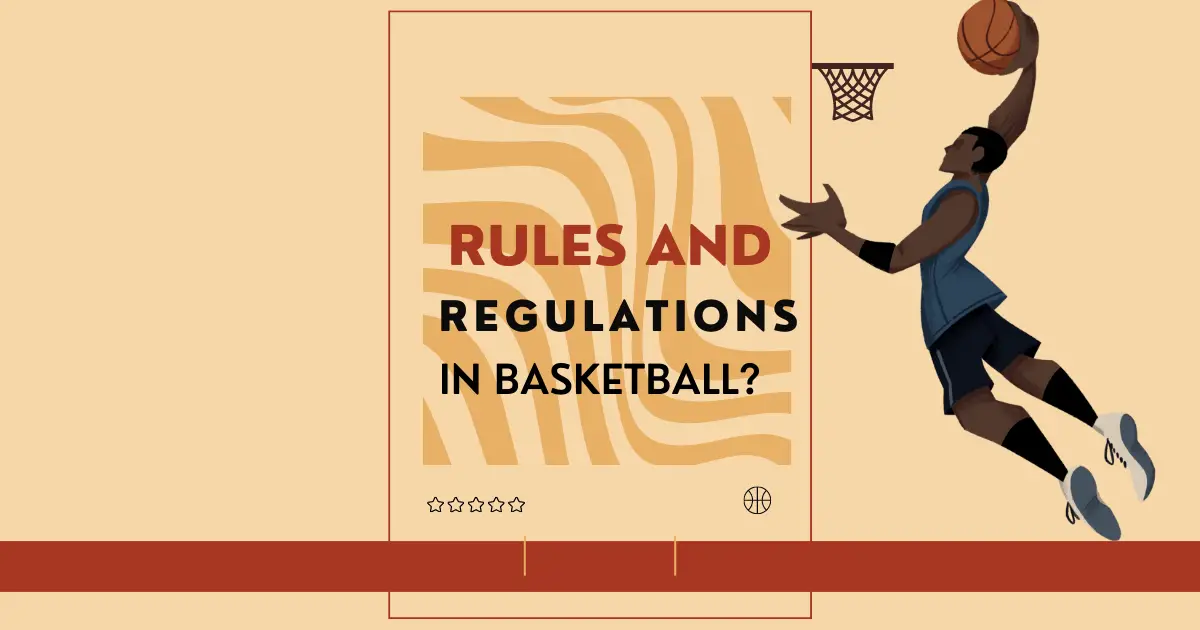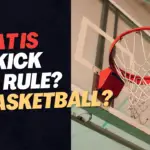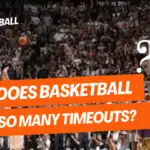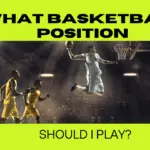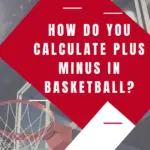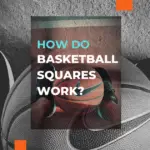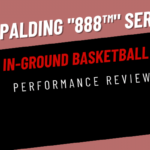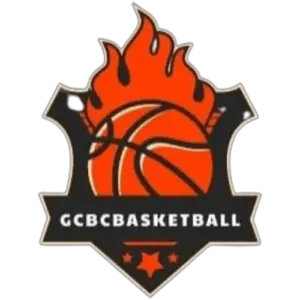Several different governing bodies oversee the sport of basketball, including the International Basketball Federation (FIBA), the National Basketball Association (NBA), and the NCAA (National Collegiate Athletic Association). The rules of basketball are pretty simple.
Basketball Rules And Regulations
-
No. Of Players Per Team On The Court
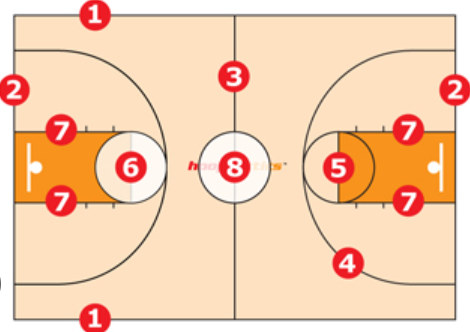
In basketball, each team can have a maximum of five players on the court at any time. This rule has been in place since the sport was first invented and is one of the most fundamental aspects of the game.
-
Score To Win
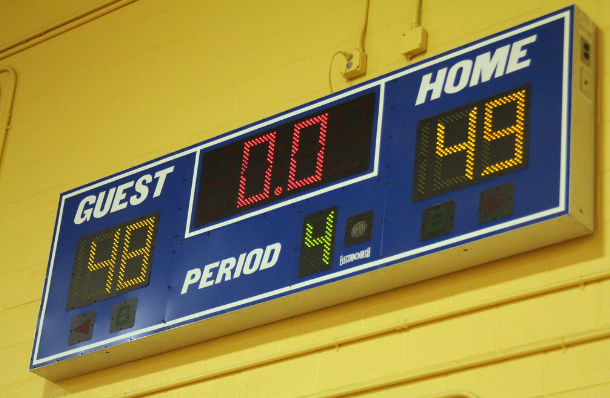
To win a basketball game, one team must score more points than the other. This is usually accomplished by shooting the ball through the hoop. The team with the most points at the end of the game wins.
-
Shot Clock
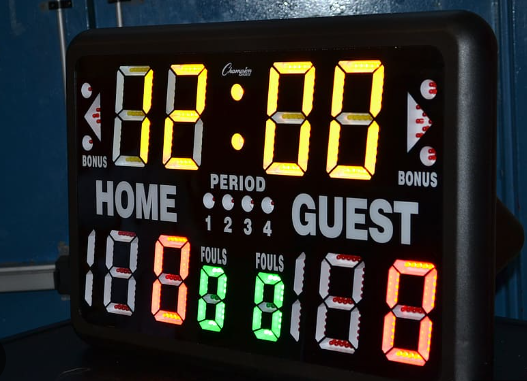
A shot clock gives the offensive team limited time to score. The shot clock is typically set at 24 seconds; if the team does not score within that time, the other team gets possession of the ball.
However, there are situations where the shot clock may be reset. For example, if the ball goes out of bounds or a foul is committed, the shot clock will be reset to 24 seconds.
Knowing when and how the shot clock works are essential for players and coaches.
-
Advancing the ball

Dribbling is the legal way of advancing the ball by oneself, as opposed to passing it to another player or shooting for a goal. It consists of bouncing the ball on the floor continuously with one hand while walking or running down the court.
-
Time to Inbound The Ball for the Offense
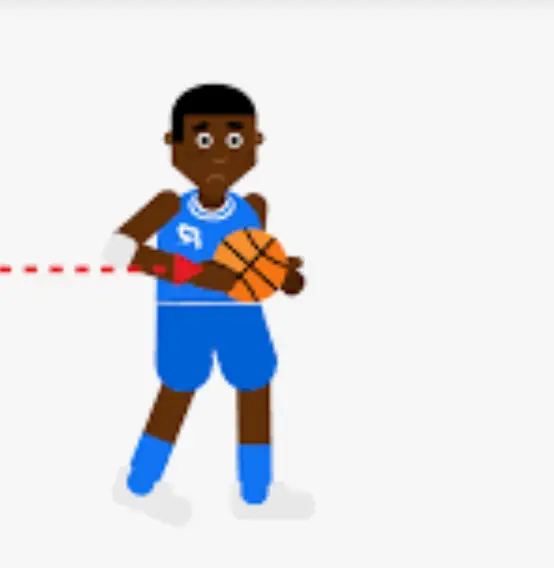
In basketball, the offense has five seconds to inbound the ball after a made basket, horn sounding, or other dead ball situation. If the offense does not inbound the ball within five seconds, they will turn over the ball to the other team.
-
Ball Advancing Rules for the Offense
The offense must take the ball and move it up the court. The team is allowed to dribble or pass the ball, but they cannot hold onto it for more than three seconds. If they do not advance the ball, they will lose possession of it.
-
Inbound Rule
The ball and the player handling it must stay within the bounds of the court. This is one of the game’s most basic rules and is enforced at all levels, from amateur to professional.
-
Defenders Interference Rules
This rule is in place to protect the shooter from having their shot blocked by a defender. If a defender does interfere with a shot on a downward trajectory, it is considered goaltending, and the shot will be awarded to the offensive team.
-
Defenders Can Legally Block Or Steal The Ball
Defenders can legally block or steal the ball from the offensive player. For example, defenders cannot use their hands or body to push the offensive player away from the ball. If they do, it is called a foul, and the other team is awarded free throws.
-
Time limit for Defenders to Leave The Paint
One of the most important rules is that defenders must leave the paint after three seconds. This rule is in place to prevent defenders from camping out in the paint and blocking shots.
-
Each Team Is Allotted A Certain Number Of Fouls
In the NBA, each team is allowed six fouls per game. If a team commits more than six fouls, they will be penalized.
-
Illegal Contact Results In A Foul
Illegal contact is a foul that results when a player excessively contacts an opponent while the ball is live. This type of contact can occur on both offense and defense, and it can result in either a personal foul or an offensive foul.
-
Illegal Contact Results In A Personal Foul
Illegal contact in basketball results in a personal foul and is penalized by the award of free throws to the opposing team. If the contact occurred on a player with the ball, that player is also awarded an additional free throw.
-
Excessive Contact Results In A Flagrant Foul
A flagrant foul is defined as contact that is both excessive and unnecessary. This type of foul can result in the ejection of the offending player, as well as free throws for the opposing team.
-
Charges And Illegal Screens Result In An Offensive Foul
A charge is only called when the contact happens in the frontcourt, and the defender is set. If the contact happens in the backcourt, it is not a charge. A moving screen or illegal screen occurs when an offensive player uses his body to impede the progress of a defensive player.
Conclusion:
In conclusion, rules and regulations are essential in basketball because they provide a structure for the game. Without rules, there would be chaos on the court. By following the rules, players can stay safe and have fun while playing the game.

Clyde Jackson III is a basketball coach and the founder of GCBC Basketball, a basketball-related learning and informational website that focuses on helping young players develop their skills on and off the court. With over 15 years of coaching experience, Clyde has worked with players of all ages and skill levels, from beginners to professionals.

